17th Century William and Mary Olive Oyster Cushion Mirror
Circa 1690 England
SOLD
Request Information
Follow Us
17th Century William and Mary Olive Oyster Cushion Mirror
Further reading –
Oystering or oyster veneer is a form of veneering, a type of parquetry. This technique requires thin slices of wood branches or roots cut in cross-section, usually from small branches of walnut, olive, kingwood and less commonly laburnum, yew and cocus. The resulting circular or oval pieces of veneer are laid side by side in furniture to produce various decorative patterns.
Because the shape formed resembles an oyster shell the technique acquired the name of ‘oyster veneering’. It is purported that the technique was first developed by English cabinet-makers in the 1660s, immediately after the Restoration of the monarchy, first being used on furniture such as the cocuswood cabinet on stand which bears the cipher of Queen Henrietta Maria (circa 1660) but I believe the technique most likely came from the Huguenot cabinet makers.
Condition
Provenance
Literature
Dimensions
PREVIOUSLY SOLD
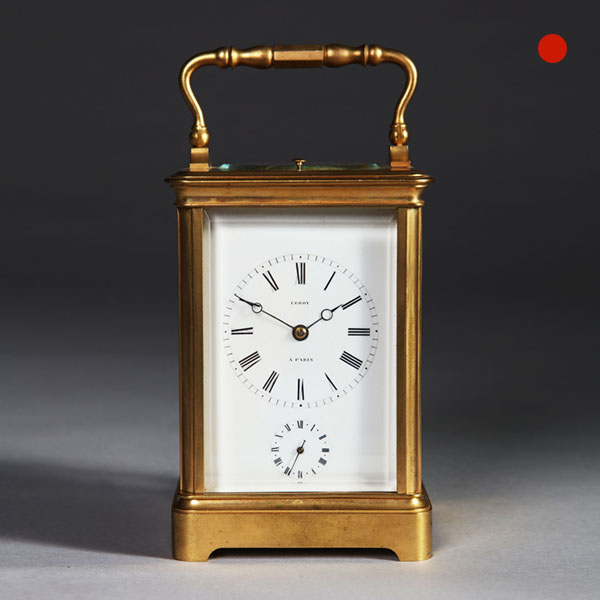
19th-Century Quarter-striking Carriage Clock by Leroy, Paris
The gilt-brass, so-called corniche case has bevelled glass panels on all sides so that the movement is entirely visible. It is surmounted by a shaped carrying handle. The white enamel dial has a Roman chapter ring, with Arabic five-minute and minute divisions.
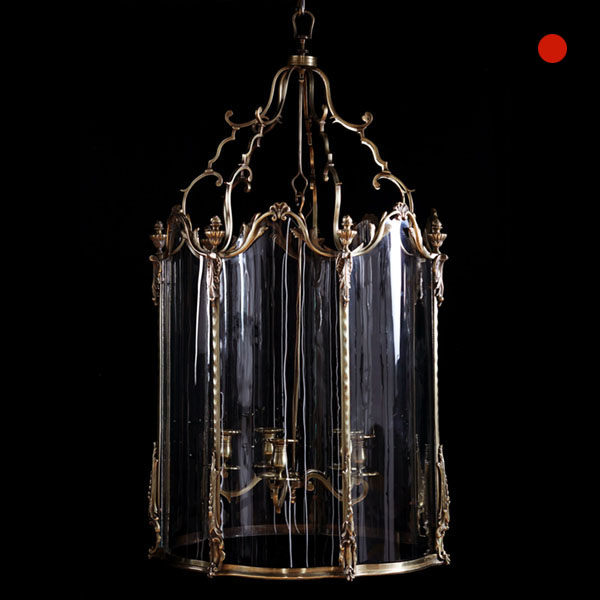
Louis XV Style French Lantern
A superb large French brass lantern of Louis XV style, 19th century. The five light chandelier within a cylindrical lantern cast with scrolling acanthus, shells and vase-shaped finials with serpentine glazed panels, fitted for electricity.
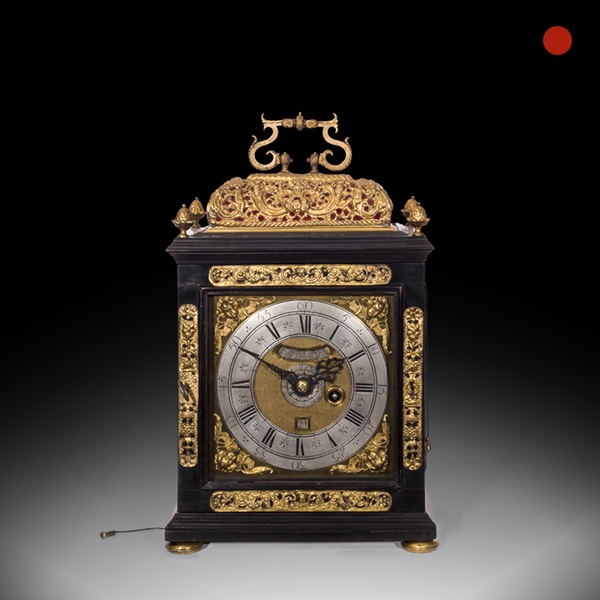
17th-Century Ebony Veneered Table Clock with Alarm and Pull Quarter Repeat
A magnificent sprung driven table clock by respected London maker George Etherington. The late 17th century, ebony- veneered table clock with alarm and pull quarter repeat on two bells, signed on the chapter ring Etherington London, and on the backplate Geo Etherington LONDON, c. 1695-1700.
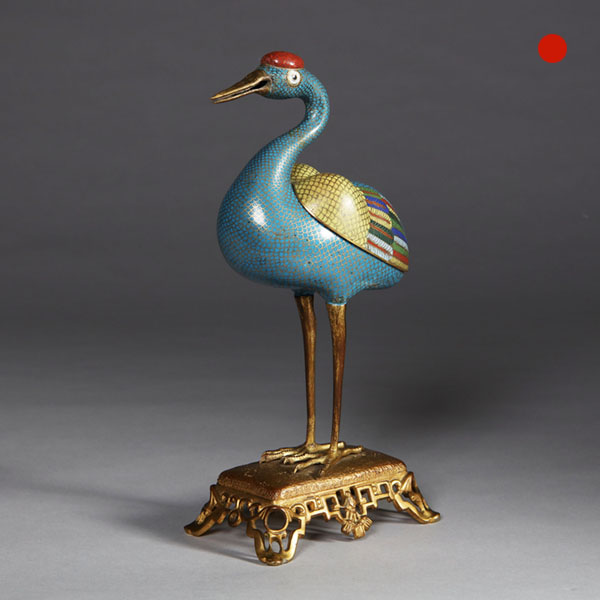
Chinese Cloisonne Enamel Censer Modelled as a Crane 18/19th Century Qing Dynasty
The characterful and charming 18/19th-century cloisonne enamel censer, is modelled as a crane with straight gilt-metal legs, realistically detailed feet and claws, standing on a detailed gilt base. The neck gracefully curved above the plump hollow body brightly enamelled in turquoise.
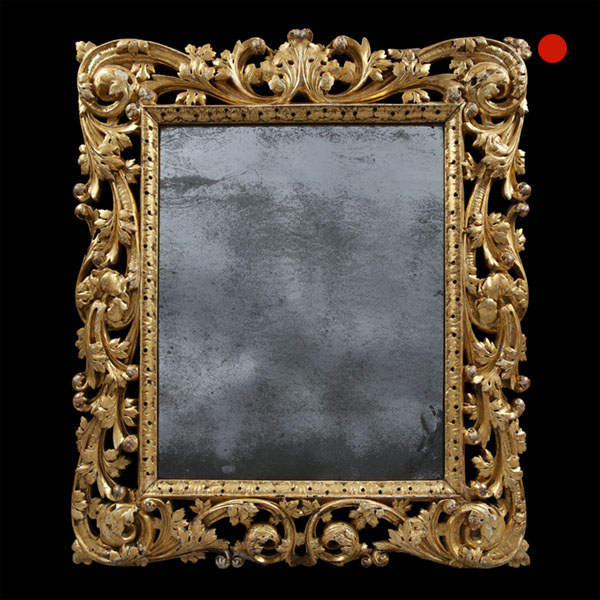
Charles II Gilt-Wood Mirror with Asymmetrical Foliate Scrolls and Leaf Border
Superb Charles II gilt-wood mirror with asymmetrical foliate scrolls and leaf border. The mirror is both beautiful and remarkable surviving since the last quarter of the 17th century.
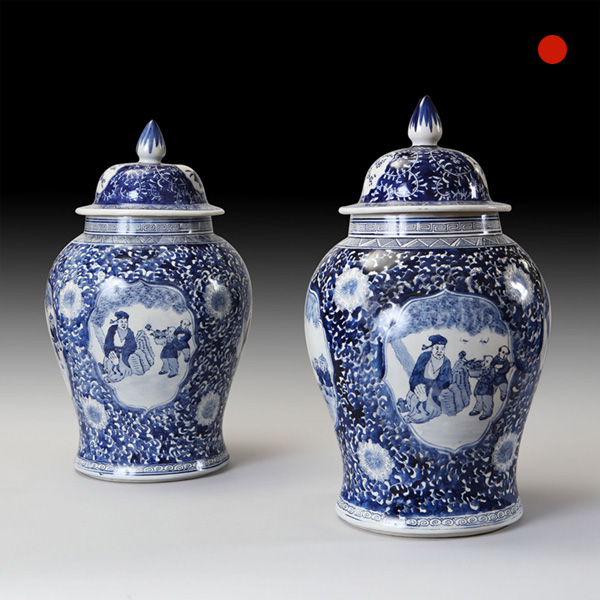
Large Pair of Blue and White Baluster Vases and Covers
Each jar is decorated with four reserves on a ground of scrolling flowers. The domed covers are surmounted by a finial. LATE QING DYNASTY (1644-1911).

19th-Century Quarter-striking Carriage Clock by Leroy, Paris
The gilt-brass, so-called corniche case has bevelled glass panels on all sides so that the movement is entirely visible. It is surmounted by a shaped carrying handle. The white enamel dial has a Roman chapter ring, with Arabic five-minute and minute divisions.

Louis XV Style French Lantern
A superb large French brass lantern of Louis XV style, 19th century. The five light chandelier within a cylindrical lantern cast with scrolling acanthus, shells and vase-shaped finials with serpentine glazed panels, fitted for electricity.

17th-Century Ebony Veneered Table Clock with Alarm and Pull Quarter Repeat
A magnificent sprung driven table clock by respected London maker George Etherington. The late 17th century, ebony- veneered table clock with alarm and pull quarter repeat on two bells, signed on the chapter ring Etherington London, and on the backplate Geo Etherington LONDON, c. 1695-1700.

Chinese Cloisonne Enamel Censer Modelled as a Crane 18/19th Century Qing Dynasty
The characterful and charming 18/19th-century cloisonne enamel censer, is modelled as a crane with straight gilt-metal legs, realistically detailed feet and claws, standing on a detailed gilt base. The neck gracefully curved above the plump hollow body brightly enamelled in turquoise.

Charles II Gilt-Wood Mirror with Asymmetrical Foliate Scrolls and Leaf Border
Superb Charles II gilt-wood mirror with asymmetrical foliate scrolls and leaf border. The mirror is both beautiful and remarkable surviving since the last quarter of the 17th century.

Large Pair of Blue and White Baluster Vases and Covers
Each jar is decorated with four reserves on a ground of scrolling flowers. The domed covers are surmounted by a finial. LATE QING DYNASTY (1644-1911).
YOU MAY ALSO LIKE
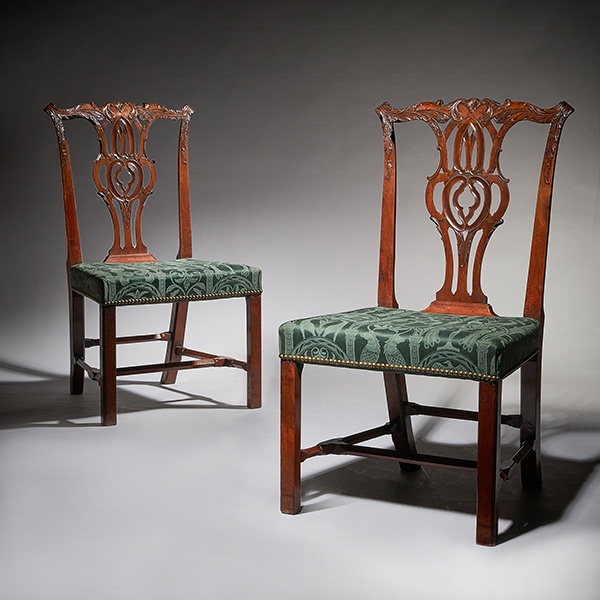
Pair of 18th Century George III Carved Mahogany Chippendale Chairs
Pair of 18th Century George III Carved Mahogany Chippendale Chairs £8,900Follow UsPair of 18th Century George III Carved Mahogany Chippendale Chairs A simply superb pair of carved George III mahogany chairs, C.1770. Condition Good. Wear...
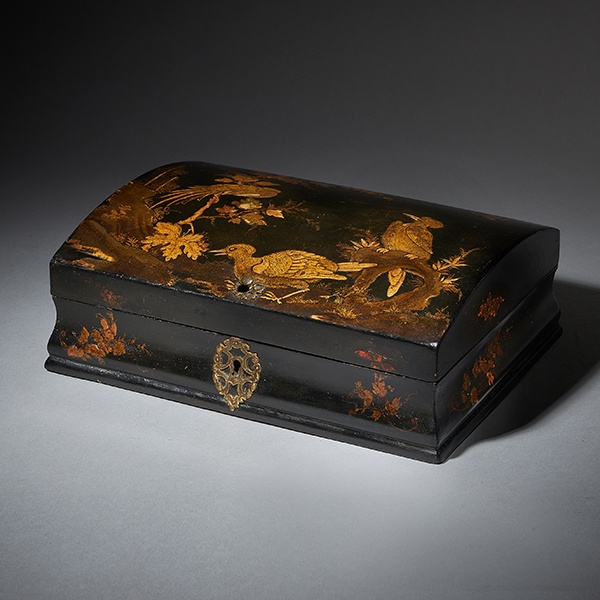
18th Century Japanned Chinoiserie Dome-Topped Box, Circa 1715-1725
18th Century Japanned Chinoiserie Dome-Topped Box, Circa 1715-1725 £3,800Follow Us18th Century Japanned Chinoiserie Dome-Topped Box, Circa 1715-1725 Early 18th century George I Japanned Chinoiserie dome-topped box, Circa 1715-1725. England or...
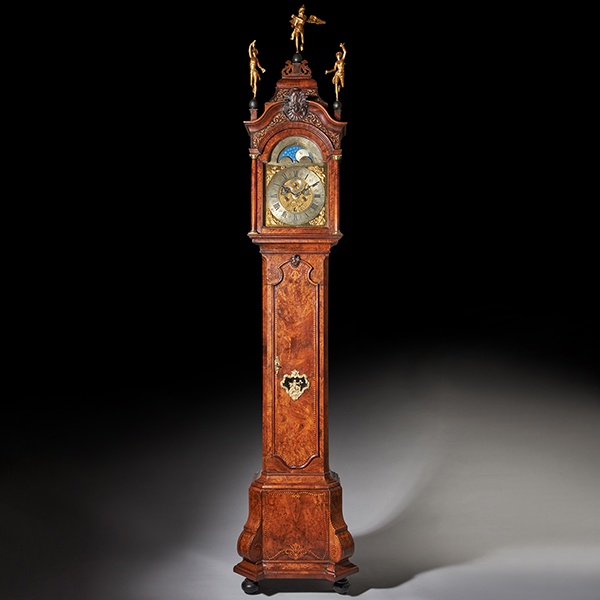
Magnificent 18th Century Striking Dutch Amsterdam Burl Walnut Longcase Clock
Magnificent 18th Century Striking Dutch Amsterdam Burl Walnut Longcase Clock £26,000Follow UsMagnificent 18th Century Striking Dutch Amsterdam Burl Walnut Longcase Clock An impressive Dutch longcase clock with a burr walnut veneered oak case,...
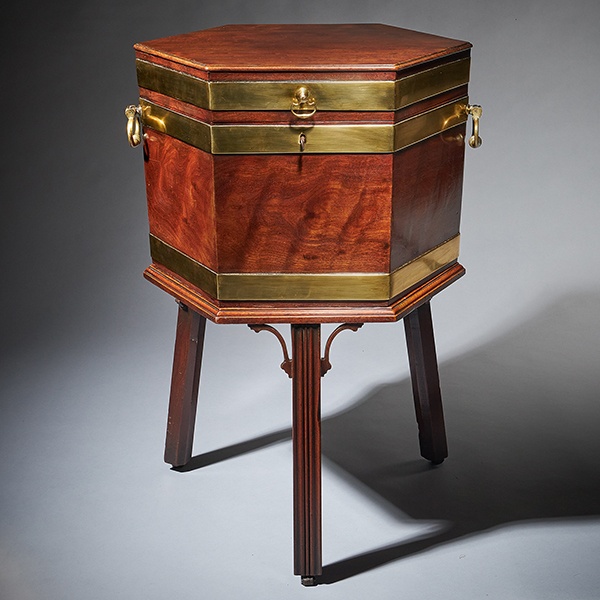
18th Century George III Mahogany Wine Cooler or Cellarette
18th Century George III Mahogany Wine Cooler or Cellarette £4,600Follow Us18th Century George III Mahogany Wine Cooler or Cellarette A fine and well-figured George III mahogany hexagonal wine cooler or cellarette on the original stand, C....

Striking 19th Century Carriage Clock with a Gilt-Brass Corniche Case by Grohé
Striking 19th Century Carriage Clock with a Gilt-Brass Corniche Case by Grohé £3,995 Follow UsStriking 19th Century Carriage Clock with a Gilt-Brass Corniche Case by Grohé Striking carriage clock with a gilt-brass corniche case by Grohé,...
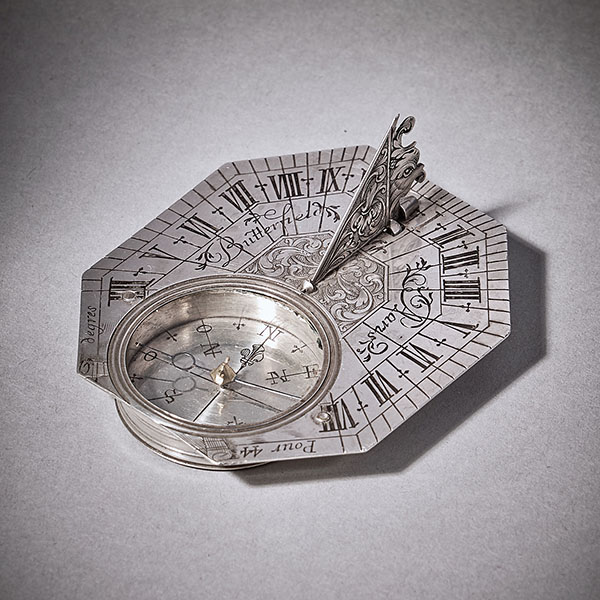
Rare Silver Pocket Sundial and Compass by Michael Butterfield, Paris, circa 1700
Rare Silver Pocket Sundial and Compass by Michael Butterfield, Paris, circa 1700 £4,900 Follow UsRare Silver Pocket Sundial and Compass by Michael Butterfield, Paris, circa 1700 A beautiful, rare solid silver Anglo-French octagonal pocket...

Pair of 18th Century George III Carved Mahogany Chippendale Chairs
Pair of 18th Century George III Carved Mahogany Chippendale Chairs £8,900Follow UsPair of 18th Century George III Carved Mahogany Chippendale Chairs A simply superb pair of carved George III mahogany chairs, C.1770. Condition Good. Wear...

18th Century Japanned Chinoiserie Dome-Topped Box, Circa 1715-1725
18th Century Japanned Chinoiserie Dome-Topped Box, Circa 1715-1725 £3,800Follow Us18th Century Japanned Chinoiserie Dome-Topped Box, Circa 1715-1725 Early 18th century George I Japanned Chinoiserie dome-topped box, Circa 1715-1725. England or...

Magnificent 18th Century Striking Dutch Amsterdam Burl Walnut Longcase Clock
Magnificent 18th Century Striking Dutch Amsterdam Burl Walnut Longcase Clock £26,000Follow UsMagnificent 18th Century Striking Dutch Amsterdam Burl Walnut Longcase Clock An impressive Dutch longcase clock with a burr walnut veneered oak case,...

18th Century George III Mahogany Wine Cooler or Cellarette
18th Century George III Mahogany Wine Cooler or Cellarette £4,600Follow Us18th Century George III Mahogany Wine Cooler or Cellarette A fine and well-figured George III mahogany hexagonal wine cooler or cellarette on the original stand, C....

Striking 19th Century Carriage Clock with a Gilt-Brass Corniche Case by Grohé
Striking 19th Century Carriage Clock with a Gilt-Brass Corniche Case by Grohé £3,995 Follow UsStriking 19th Century Carriage Clock with a Gilt-Brass Corniche Case by Grohé Striking carriage clock with a gilt-brass corniche case by Grohé,...

Rare Silver Pocket Sundial and Compass by Michael Butterfield, Paris, circa 1700
Rare Silver Pocket Sundial and Compass by Michael Butterfield, Paris, circa 1700 £4,900 Follow UsRare Silver Pocket Sundial and Compass by Michael Butterfield, Paris, circa 1700 A beautiful, rare solid silver Anglo-French octagonal pocket...



